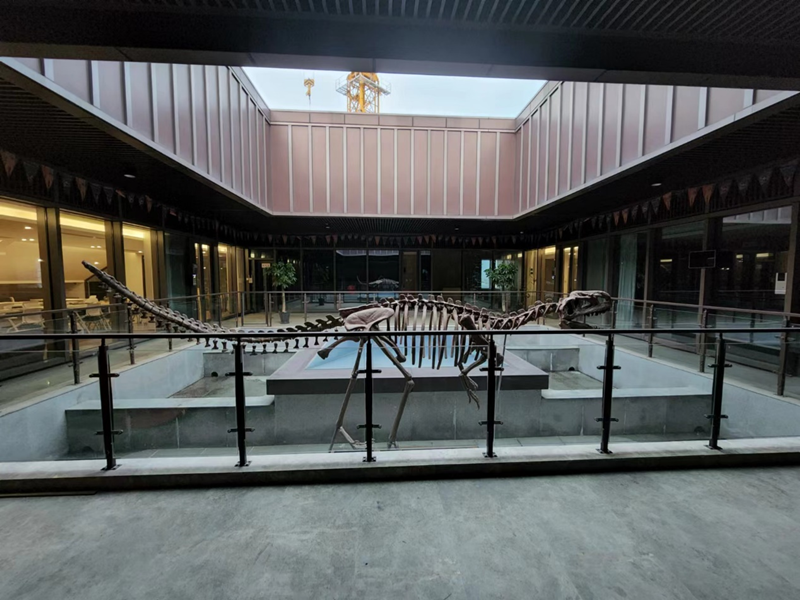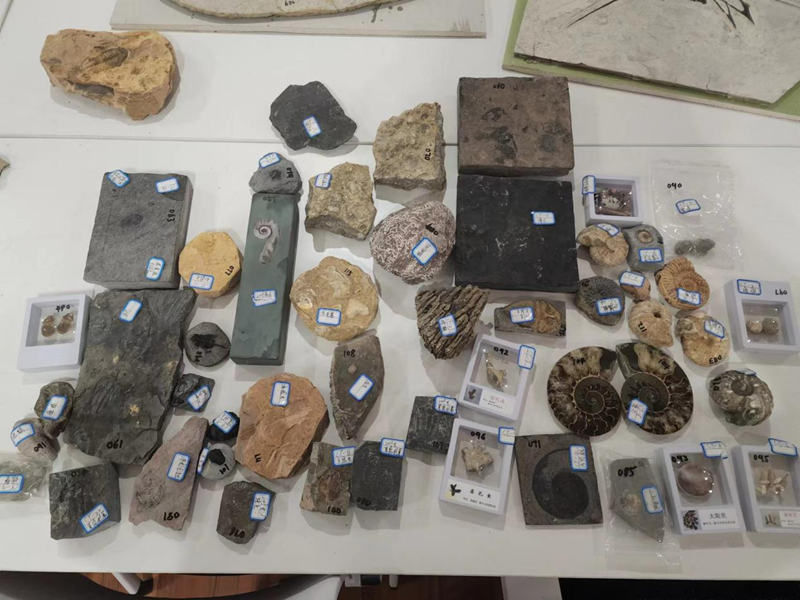WAYS MUSEUM OF NATURAL HISTORY
Earth science is a big topic, covering tens of thousands of miles, up and down hundreds of millions of years. It contains the important topics of human's research on the earth and biological evolution, and is the basis for realizing sustainable economic and social development. WAYS Museum of Natural History concentrates the mysteries of earth science and presents the yearning and pursuit of beauty and the future of human society.
Located on the third floor of Qidu Young Scientist π Community, WAYS Museum of Natural History mainly displays the fossils of "Rehe Biota" in western Liaoning Province, including "Dinosaur Fossil Model and Rehe Biota Fossil Exhibition", "Paleontological Animal Evolution Museum", "Plant and Insect Fossil Museum", and "Juvenile Fossil Research and Experiment Base".
WAYS Museum of Natural History is the "window" of Lucheng District display and exchange, is the rare geological and mineral specimens collection, research center, earth science knowledge popularization and youth science and cultural quality education base, is also a collection of scientific research, science, viewing, leisure, entertainment, stone appreciation in one of the ideal place. The construction of the natural science Museum can become an important scientific and cultural innovation support part of Lucheng District, fill the gap of science popularization and innovation base, and will certainly become another set of Lucheng District tourism, innovation, science and other functions of one of the popular attractions. The museum consists of four sections: dinosaur fossil model exhibition, science popularization of Rehe biota evolution in western Liaoning Province, science popularization education base for teenagers and fossil research Center.
Dinosaur fossil model display
The huge pterosaur fossil model suspended in the open-air atrium on the third floor combines with two single cristaurus fossil models placed on the ground.

Evolution of the Jehol biota in western Liaoning
The Jehol Biota has been hailed as "one of the most important paleontological discoveries in the world in the 20th century", a world-class fossil treasure house and the Pompeii of the Mesozoic era. The study of animal evolution is of great scientific significance. About 100 rare fossils covering the evolution of the "Jehe Biota" from gastropods to fish, amphibians, birds and mammals are on display here.

Youth science Education base
Regular earth science, fossil science activities, juvenile fossil research scientific activities, etc., to build earth science knowledge popularization and youth science and cultural quality education base.
National innovation ability and competitiveness depend on whether a country's education can cultivate and bring up a large number of innovative talents to adapt to the development of The Times. Young people are the future of a country. Popular science among young people plays an important and decisive role in promoting quality education, endowing education with innovative function, improving young people's scientific quality, and implementing the strategy of rejuvenating the country through science and education, strengthening the country through talent and sustainable development.

Fossil Research Center
Carry out a series of scientific activities such as fossil collection, restoration and research.
During the development and evolution of paleontology on Earth, fossil research is an important part of the whole research work. Through the excavation and restoration of fossils, we can intuitively understand the physical characteristics and living habits of paleontologists, so as to effectively study the way of living and evolution of paleontologists.

